#Soyuz-1
Explore tagged Tumblr posts
Text
The story of these two men is my Roman Empire.
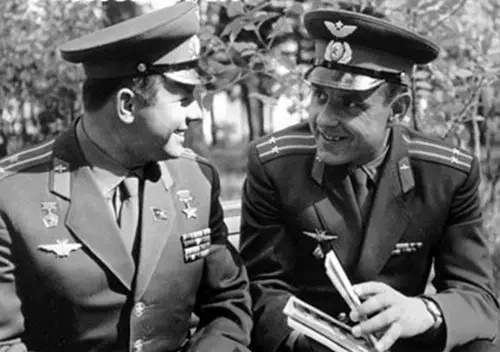
Yuri Gagarin and Vladimir Komarov were highly decorated Cosmonauts, both of which made firsts in the history of space flight.
Yuri Gagarin famously became the first man in space on April 12, 1961.
Vladimir Komarov piloted Voshkod 1 on October 12, 1964 on the first space mission to carry multiple crew members. He flew again aboard Soyuz 1 on April 23, 1967, becoming the first Russian man to make two spaceflights.
Yuri Gagarin and Vladimir Komarov were close.
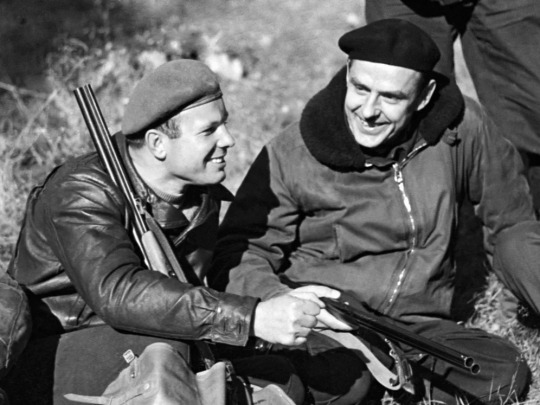
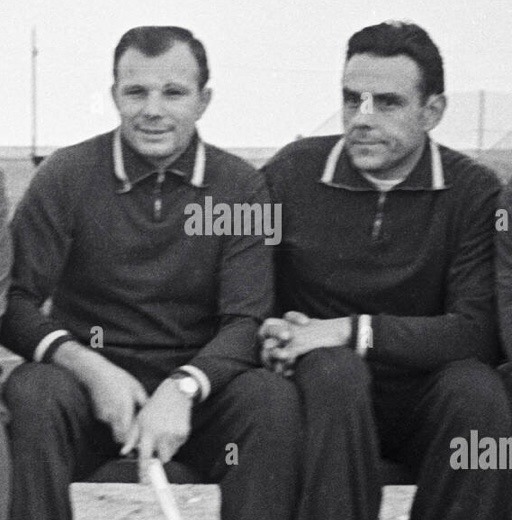
The Soyuz 1 was described as being “a piece of shit” and a “devil ship” as issues plagued the spacecraft throughout development and failed testing. Yuri had done everything he could to get the launch postponed, including writing a ten-page memo detailing the 203 structural problems he had discovered during inspection of the Soyuz 1. Any person who had laid eyes on the memo would be fired or demoted.

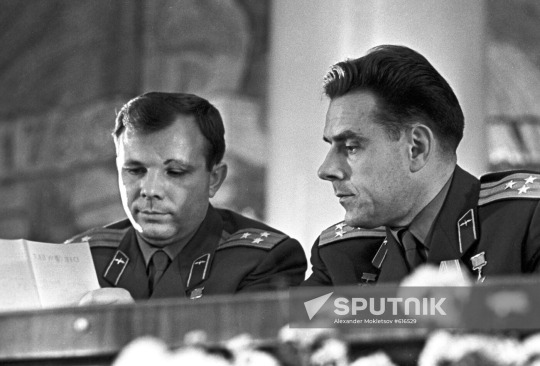
Komarov knew of these issues, but refused to step down from the missions. In March of 1987 he met with Venyamin Russayev, a then-recently-demoted KGB agent who had been assigned to "mind" Yuri Gagarin.
He met with Russayev and said, "I'm not going to make it back from this flight." Russayev asked, “Why not refuse?” Komarov answered: "If I don't make this flight, they'll send the backup pilot instead." That was Yuri Gagarin. Komarov couldn't do that to his friend. "That's Yura. And he'll die instead of me. We've got to take care of him." Komarov then burst into tears.

Yuri, nicknamed Yura by friends and family, showed up on the day of the launch “demanding to be put into a space suit,” "demanding this and this and this...", doing anything and everything he could to be the one on that spacecraft instead of Vladimir. Unfortunately, his attempts were be futile.
Soyuz 1 would launch on April 23, 1967 and faced serious issues throughout the flight. The parachutes failed to deploy during reentry and the spacecraft burned up while Vladimir screamed and cried and cursed out those responsible.

Yuri Gagarin was grounded from future space flights and denied permission to pilot military jets. This was devastating for the already deeply depressed man and everyone knew it. Even his favorite hairdresser said that “Yuri couldn't live without flying. It was his whole life. A man can't live without his trade. He can't survive.”
He eventually convinced them to let him fly, but on March 28, 1968, less than a year since Komarov’s accident, he was tragically killed during a routine-training flight aboard a MiG-15. The cause of the accident is unclear, though many speculate that the accident was an assassination on the cosmonaut as he had a falling out with several high-ranking officials following the death of his close friend.
Both Yuri Gagarin and Vladimir Komarov’s names are featured on the memorial for fallen US Astronauts and USSR Cosmonauts left on the moon by the Apollo 11 crew.

#I KNOW FOR A FACT I read somewhere that Yuri dug through the crash site for his remains but I can’t remember 😭😭😭#DID I MENTION HE’S 5’ 2???#there’s tons of controversy surrounding what’s right and wrong but regardless their story is tragic#and I mean tons of controversy btw#there’s absolutely no way for us to know what’s right and what’s wrong#we’ll never know what actually happened but we all know what should (or should I say shouldn’t) have happened#look at how they look at each other and tell me there’s not *something* there#space race#Cold War#Soyuz 1#Yuri Gagarin#Vladimir Komarov#cosmonaut#research#information#THIS is my Roman Empire fr#like these two deserved better 😭
179 notes
·
View notes
Text
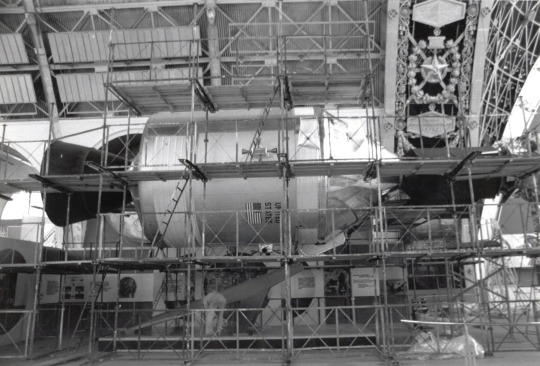

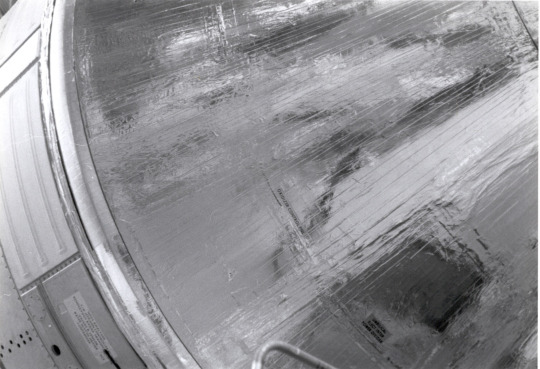

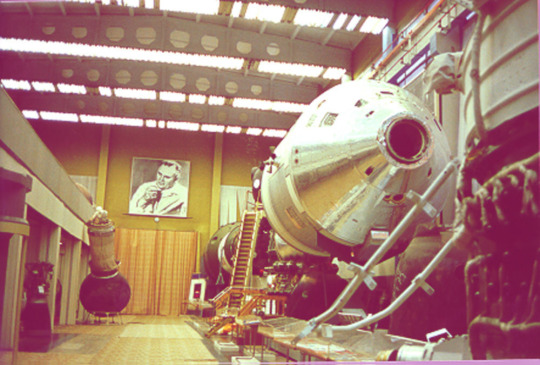
Photos of the Apollo Command and Service Modules (CSM-098) being set up as part of the Apollo Soyuz Test Project display in Moscow. This CSM was used during 2-TV-1 and 2-TV-2, which was the thermal vacuum evaluation testing of the Apollo program. It was donated to the Smithsonian on December 16, 1975.
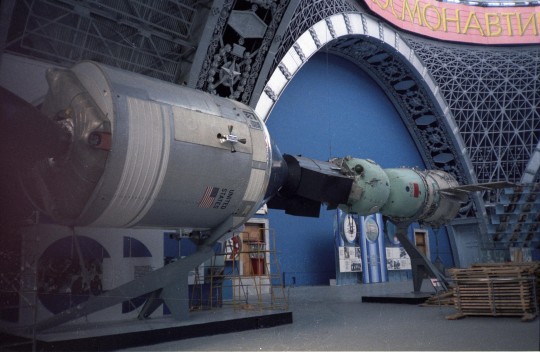

In 1977, it was loaned to the Cosmos Pavillion to be a part of said display. The exhibition was dedicated to Soviet technology from the 1960s, in response to the great New York fair.

It is now displayed at the RKK Energia Museum in Korolyov, Moscow Oblast, Russia, with the Engineering test model of the Soyuz 19. Under the display is the original Soyuz 19 descent module.
Smithsonian Institute Archives: A19772540000
Posted on Flickr by Raymond Cunningham: link
source
Photograph taken by Nallyn: link
#Apollo Program#CSM-098#Apollo CSM Block II#2-TV-1#2-TV-2#NASA#Soviet Space Program#Apollo–Soyuz#Apollo Soyuz Test Project#ASTP#Soyuz 19#Soyuz 7K-TM#No.75#December#my post
91 notes
·
View notes
Text
One of my favourite spaceflight facts is that, due to some heavy technicalities on what the universally accepted definition of an astronaut is, and the intense secrecy surrounding the Soviet Union at the time, the entire Vostok program, AKA the thing that first took humans into space, technically doesn't count and everyone just agrees to ignore that.
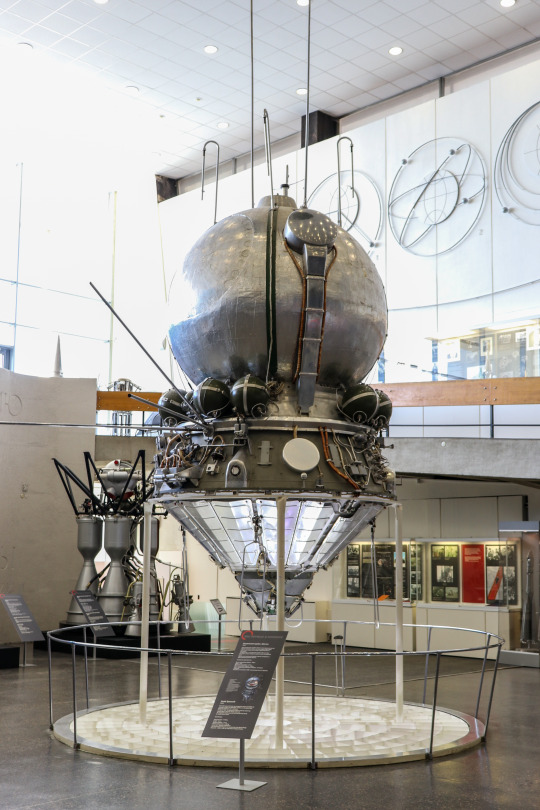
Submitting my claim that Vostok is actually the cutest spacecraft ever, which is an entirely normal statement.
When they sat down and defined what counts as a successful manned flight, part of the requirements included the astronaut(s) landing in the vehicle. But Vostok didn't do that. Instead, the Vostok cosmonauts ejected from the vehicle after re-entry and parachuted to the ground separately. This continued until the later Voskhod missions, where they ripped out the ejector seat so they could fit more guys inside (and on the second one, one guy and an inflatable airlock so one of them could do the first spacewalk), and put in a rollcage so that landing inside the vehicle wouldn't turn them to goo.
But by the time Voskhod 1 blasted off from Baikonur, all of the Mercury flights had already been flown, so this means that, according to the rules, America technically completed the first manned space flights.
Another technicality was added to the list a couple of years back, when the guys that make the rules futzed with said rules in order to deny Jeff Bezos and Richard Branson astronaut status, because fuck 'em. Now, in order to be an astronaut, you have to actually do something on the flight, otherwise you're just a passenger. And many of the Vostok flights were indeed more like passengers than crew. The Vostok spacecraft is pretty much a big satellite with a passenger compartment and a re-entry module, and it's fully automated.
So why didn't these technicalities get called out? The USA and USSR were never shy about trying to embarrass each other, or make each other look foolish on the world stage. One of the biggest reasons why we know the Moon Landing Conspiracy Theory is total stupidity is that the USSR congratulated NASA on the successful landing, because if it had been recorded on a soundstage in Area 51, the Soviets would've been the first to call bullshit.
Well, part of it is just that the Americans didn't know about the specifics of the Vostok program at the time. Whereas the American space program was a very public affair with cheering crowds showing up to watch every launch, the Soviets were much, much more clandestine than that. Baikonur is in the middle of the Kazakh desert, and the Soviets were keen to lie about anything that went wrong.
When their attempt at a moon rocket, the N1, endured four successive failures on launch, mostly caused by the Soviets lacking the funding and the facilities to properly test the thing, and instead just had to launch fully built rockets and hope they worked, the Soviets simply scrapped the last two and declared that they'd never intended to go to the Moon and were all about Earth orbit instead.
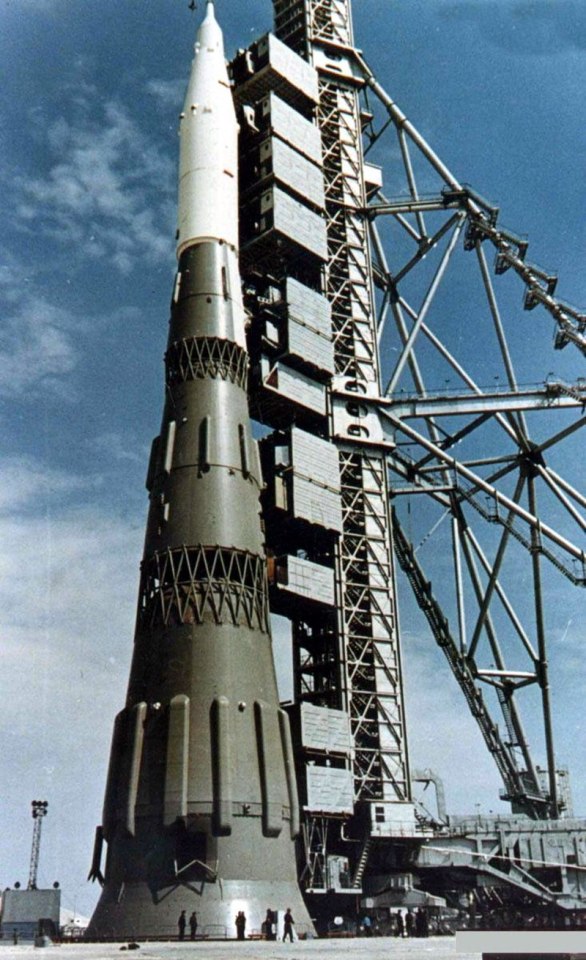
The N1 was actually more powerful than the Saturn V, but because it never reached operational status and the Soviets preferred to pretend it didn't exist, the Saturn V remained the world's most powerful rocket until Artemis 1 flew last year. A similar situation is happening now, with SpaceX's Superheavy being more powerful than the SLS, but also being basically a giant bomb at the moment.
Most Americans had no idea how Vostok worked, and didn't even know what it looked like. They didn't get to see what a Soviet spacecraft actually looked like up close until the Apollo-Soyuz mission in 1975.

Behold, the setting for the most expensive handshake in history.
By the time the full details came out, the world had known that the Soviets did it first for decades, and challenging that doesn't really do much for anyone besides the people that want to go "Um, ackchully" about everything.
Additionally, the rules weren't even written yet at the time, so there's even less reason to start changing shit up now. Vostok might be technically breaking the rules, but nobody cares, and downplaying the immense technical achievements of Sergei Korolev, Yuri Gagarin, and everyone else that worked on the early Soviet spaceflights on account of a rules quirk that wasn't even written yet is just kinda dumb.
(Random sidenote, Korolev was the chief designer of much of the USSR's early spacecraft, including the R7 rocket that carried both Sputnik and Vostok into space, and still carries some of the Soyuz flights to this day. And, like pretty much every major achievement of the USSR, he wasn't Russian. He was, in fact, Ukrainian.)
#Vostok#Vostok 1#Yuri Gagarin#Sergei Korolev#Apollo#Soyuz#Apollo-Soyuz#N1 Rocket#R7 Rocket#Voskhod#Space Flight#Space Travel#Space#History
66 notes
·
View notes
Text
It's interesting to note that all but one of the four manned spaceplane to make a flight above the 50 mile US definition of space have had a LOCV, namely:
X-15 no. 3 on X-15 Flight 3-65-97 (1967)
OV-099 Challenger on STS-51-L (1986)
OV-102 Columbia on STS-107 (2003)
VSS Enterprise (N339SS) on PF04 (2014)
Only SpaceShipOne avoided catastrophe. Perhaps that's because it was the safest of the bunch, perhaps it's only due to a small sample size of 15 non-captive flights. I lean towards the latter -- there were a lot of problems across those 15 flights.
#i may have made this post before but regardless im making it now#my thoughts#spaceflight#aviation#meanwhile among capsules only soyuz has suffered an locv#apollo 1 was of course only a ground test#though its possible that the mission would have ended fatally had it actually gone up#also worth noting that theres#lots of bias in these samples though given that no spaceflight-capable nation has ever really flown more than one spacecraft model at a tim#its hard to compare eg gemini to eg the shuttle given the major technological developments and also the totally alien political climates
3 notes
·
View notes
Text
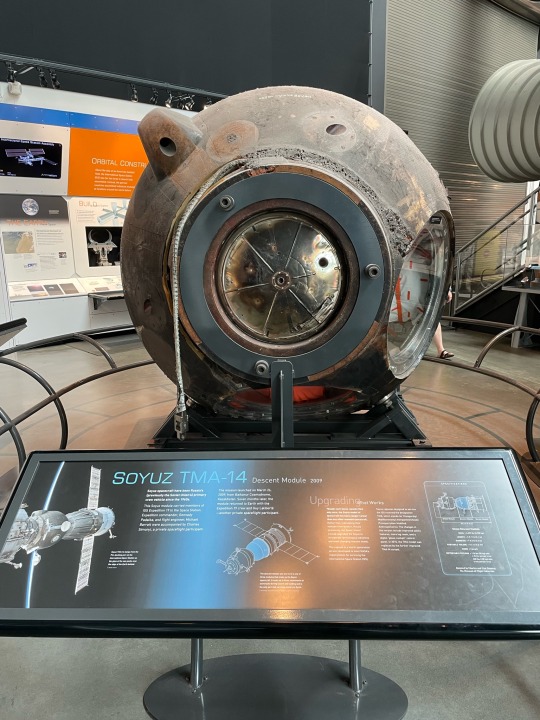


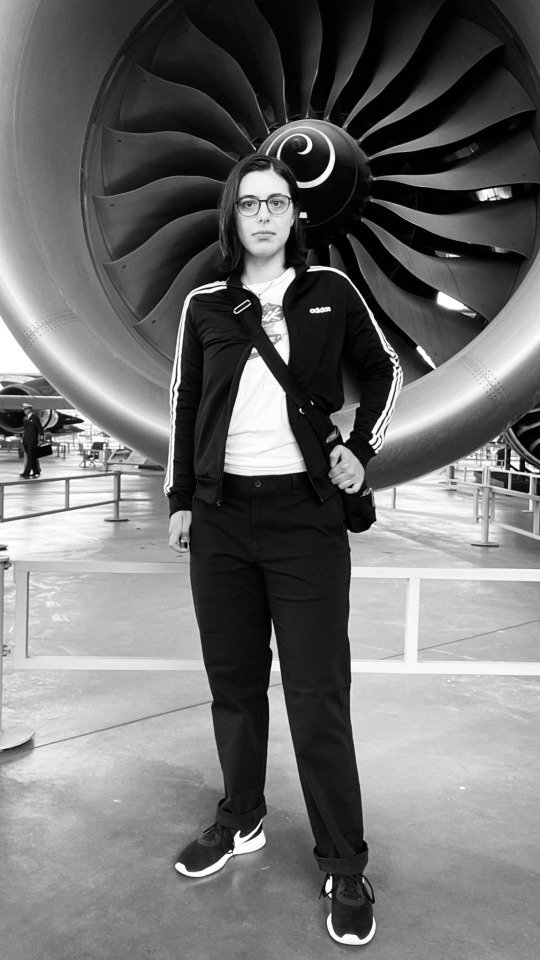
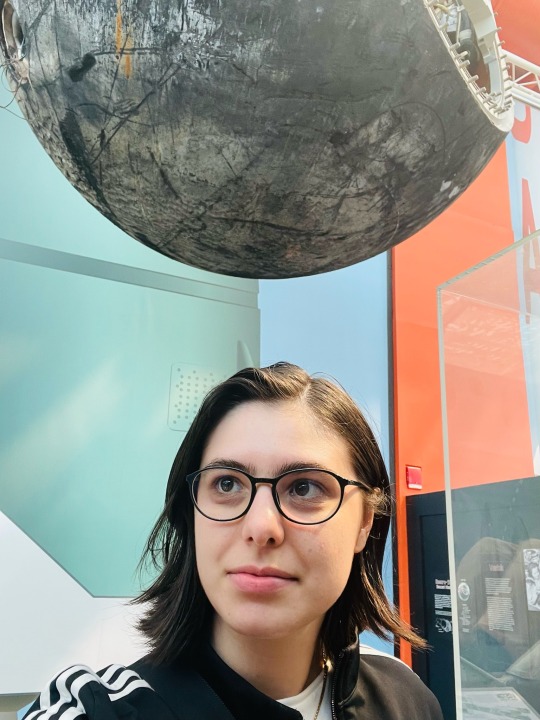
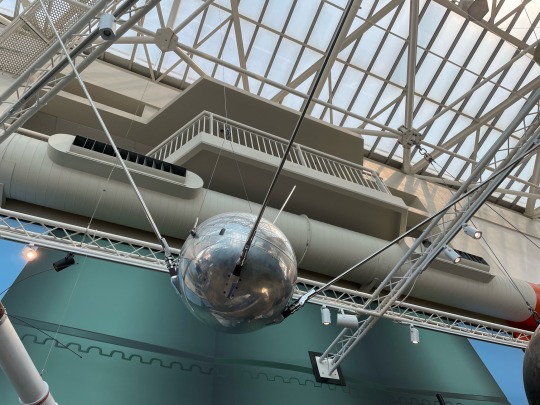
Day at the Seattle Museum of Flight 🚀🛩️
#also here's what i look like lmao#standing proudly in front of a jet engine that could easily shred me to pieces#(thankfully was inactive and only for display)#mod's face#photos#soviet space program#vostok 1#sputnik#soyuz#yuri gagarin
13 notes
·
View notes
Text


ROUND 1: GROUP A
#union of salvation#Soyuz spaseniya#Star of Captivating Happiness#Zvezda plenitelnogo schastya#the star of captivating happiness#round 1#russian period dramas bracket#period dramas#tumblr bracket#polls#tumblr polls#russian period dramas
5 notes
·
View notes
Text

N1-L3 just 2 weeks away
N1-L3 is in 2 weeks!!
#I have 6 more parts to print this is just the L3 Lunar Complex fairing so far😭#this is the first big non-firearms project I've printed lol#also have a HD version that will take 3 weeks to print and will have actual model Soyuz 7K-LOK and LK inside#unfortunately I can't find a free model for Blok D or Blok G#you'd think Blok D would at least be available since its used as a 4th stage on Proton K lol#I don't know why I'm doing both a low detail and high detail 1/72 scale model but I am#god I'm gonna need so much paint
2 notes
·
View notes
Text
Grissom White Chaffee Komarov Dobrovolsky Patsayev Volkov Jarvis McAuliffe McNair Onizuka Resnik Scobee Smith Anderson Brown Chawla Clark Husband McCool Ramon
“At the going down of the Sun, and in the morning, we will remember them…”
The above is the very first public performance of the longer version of “Fire in the Sky” performed by Jordin Kare (himself now deceased) at the Challenger memorial concert, Bayfilk III, 9 March 1986, San Jose, California.
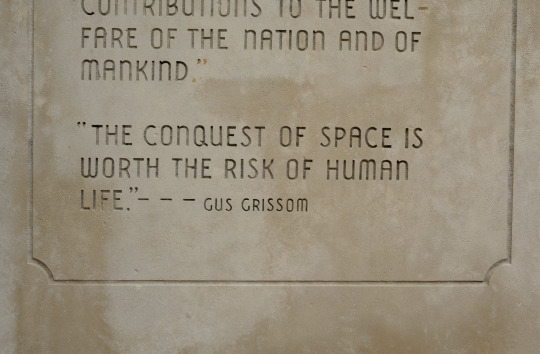

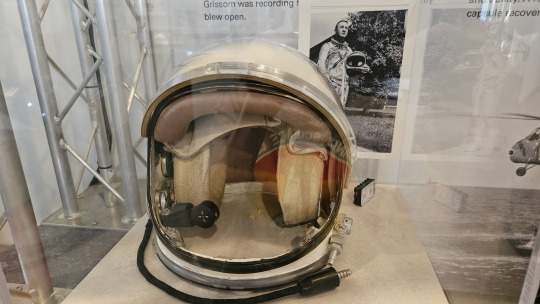
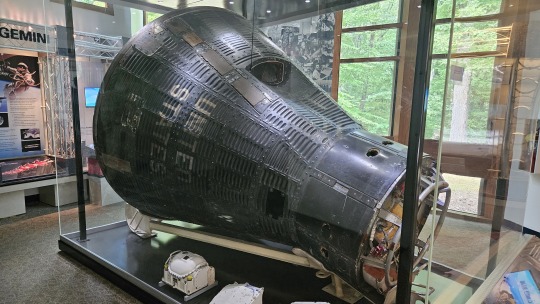
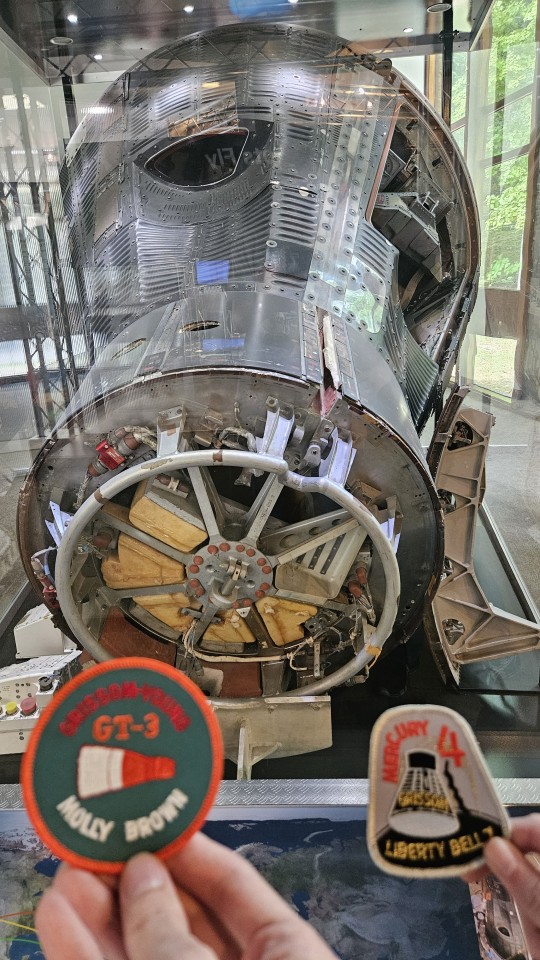
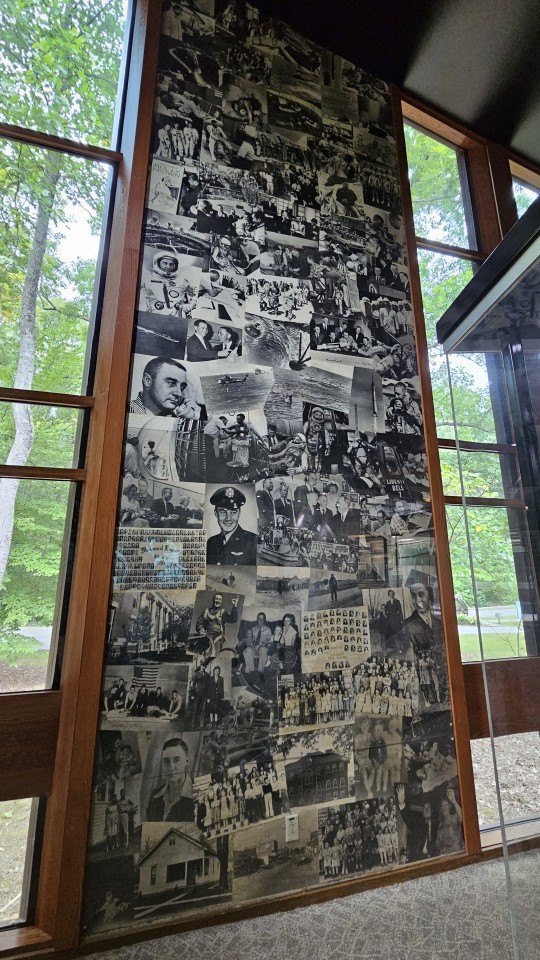
Scenes from the Grissom Memorial
Spring Mill State Park / Mitchell, Indiana
#apollo 204#soyuz 1#soyuz 11#challenger sts-51L#columbia sts-107#in memoriam#the stars are ours#the dream is alive
226 notes
·
View notes
Text
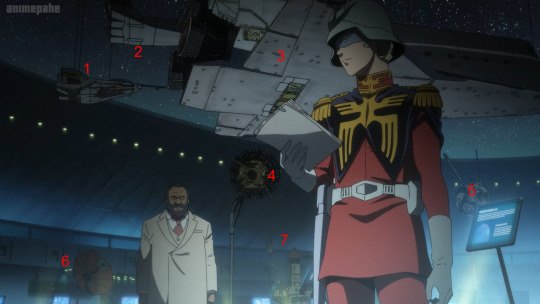
Martin Marietta X-24A
Martin Marietta X-24B
Space Shuttle Orbiter
Luna 3
Luna 1
Apollo Lunar Roving Vehicle
Luna 16
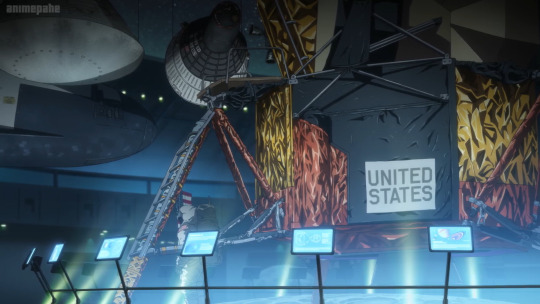
Apollo Command Module
Gemini Spacecraft
Apollo Lunar Module
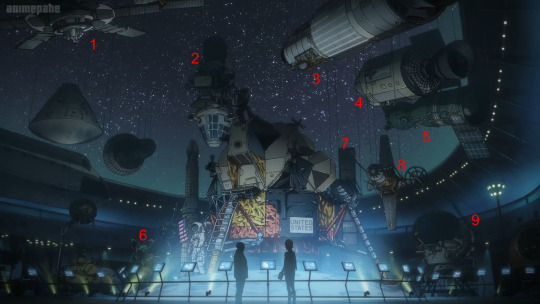
Molniya 1 (ID by shameboi on bluesky)
Luna 9
Agena Target Vehicle
Apollo Command and Service Module
Soyuz 7K-TM
Luna 9 Descent Capsule
Ranger 7
Ranger 3 (with Ranger 5's high-gain antenna)
Lunokhod Rover
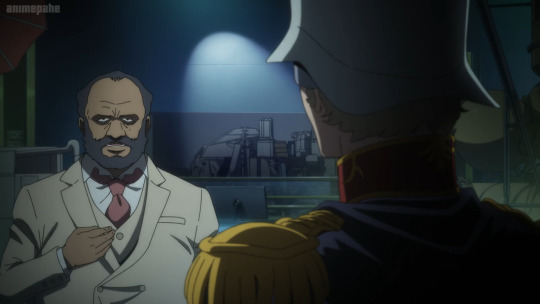
Viking Lander
#yes yes whatever they're spacecraft not planes#they have to fly through the atmosphere to get up there so close enough#i'm a space nerd as well as a plane nerd i can't help it#gundam#gundam gquuuuuux
168 notes
·
View notes
Text

Robert McCall space art on the cover of NASA's Apollo-Soyuz Pamphlet No. 1, 1977.
364 notes
·
View notes
Text

Vintage enamel pins - space
(left to right, top to bottom)
Energia rocket (1987) - $4
Mars-2 & Mars-3 (1971) - $4
Luna-16 (1970) - $6
Bryansk (city in Russia) / USSR SRV (Vietnam) / July 1980 / Soyuz-37 joint space flight - $5
Salyut & Soyuz-10 (1971) - $3.50
Vostok-3 & Vostok-4 (1962) - $6.50
1968-1988 (possibly commemorating Beregovoy's space flight?) - $4
October 5 1959 - $5
First Sputnik 1957 - $5
Interkosmos USSR-Bulgaria (1979) - $1.50
Luna-9 1966 / Lunokhod-1 1970 - lenticular (flicker picture) pin - $6
Size: 2.5—3 cm (0.9″—1.1")
Shipping: $5 for one pin, $9 for 2+ pins.
Message me!
How to buy. Other items in my shop. I combine shipping if you buy more than one item.
112 notes
·
View notes
Text
"Bacon and Eggs" [2/6]
Margo/Sergei | Fluff | FR15 | 1,482 words Breakfast is the most important meal of the day. Five times Margo and Sergei start the day together and 1 time after they’ve spent the night together. CH2 1988: Breakfast at the Nikulov House
This was not how Margo Madison had envisioned waking up in Sergei Nikulov’s bedroom.
The few times she’d considered it – which were exclusively limited to October and a specific London hotel room – Margo had thought about the weight of the sheets on her bare skin; the light struggling to break through the dense curtains. The sound of the other conference attendees milling around, hoping to grab breakfast before their early morning panels. Sometimes their imagined exchanges were awkward: Margo exclusively thought about them after sex. Sometimes it was soft, intimate. Hands touching, lips brushing, whispered exchanges. But always in a hotel suite.
Never in his family home in Moscow.
As always, it came back to Apollo-Soyuz. The mission that had brought them together had brought them back five years later, this time in Moscow with a celebration honouring the event. Margo had attended to represent NASA, alongside Dani and Morrison. She had wanted to bring Aleida with her, but Javi was still so small. So, she’d promised to bring back some airport candy and left Aleida to watch the fort. Though, if Aleida had joined Margo, this would have been a very different trip. Margo would not have spent two days in awkward meetings over lunar treaties and painfully propagandic tours. But she also would not have had the best tour guide in all of Moscow, Sergei Orestovich Nikulov, as he took her around the places that mattered most to him. And then, at the end of the tour, they had come home, rather than her hotel, due to the lateness of the hour. Which was how she found herself in his bed.
And Sergei in one of his sister’s rooms, because he was a goddamn gentleman.
Continue Reading at AO3
22 notes
·
View notes
Text
Cancelled Missions: Testing Shuttle Manipulator Arms During Earth-Orbital Apollo Missions (1971-1972)
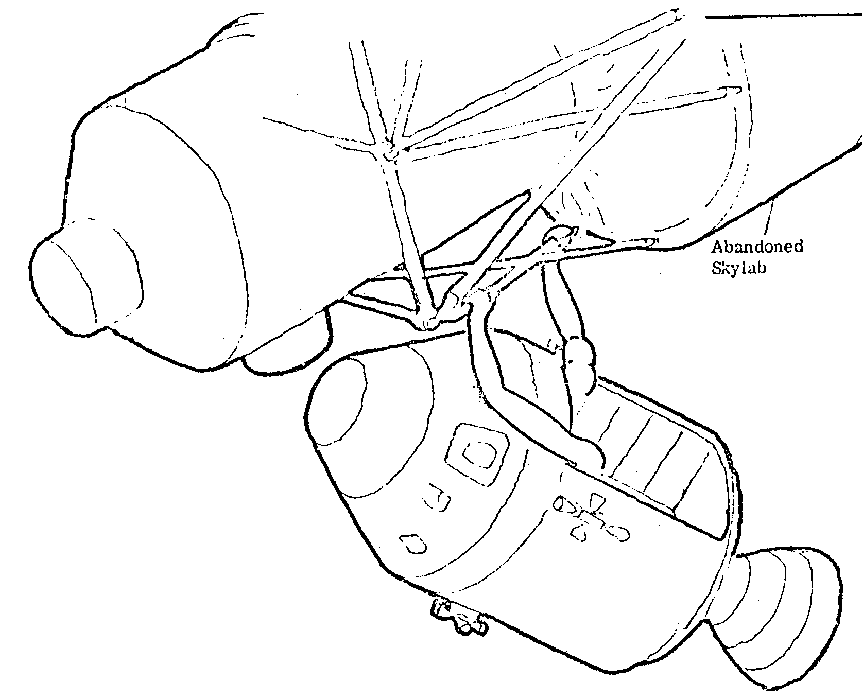
In this drawing by NASA engineer Caldwell Johnson, twin human-like Space Shuttle robot arms with human-like hands deploy from the Apollo Command and Service Module (CSM) Scientific Instrument Module (SIM) Bay to grip the derelict Skylab space station.
"Caldwell Johnson, co-holder with Maxime Faget of the Mercury space capsule patent, was chief of the Spacecraft Design Division at the NASA Manned Spacecraft Center (MSC) in Houston, Texas, when he proposed that astronauts test prototype Space Shuttle manipulator arms and end effectors during Apollo Command and Service Module (CSM) missions in Earth orbit. In a February 1971 memorandum to Faget, NASA MSC's director of Engineering and Development, Johnson described the manipulator test mission as a worthwhile alternative to the Earth survey, space rescue, and joint U.S./Soviet CSM missions then under study.
At the time Johnson proposed the Shuttle manipulator arm test, three of the original 10 planned Apollo lunar landing missions had been cancelled, the second Skylab space station (Skylab B) appeared increasingly unlikely to reach orbit, and the Space Shuttle had not yet been formally approved. NASA managers foresaw that the Apollo and Skylab mission cancellations would leave them with surplus Apollo spacecraft and Saturn rockets after the last mission to Skylab A. They sought low-cost Earth-orbital missions that would put the surplus hardware to good use and fill the multi-year gap in U.S. piloted missions expected to occur in the mid-to-late 1970s.
Johnson envisioned Shuttle manipulators capable of bending and gripping much as do human arms and hands, thus enabling them to hold onto virtually anything. He suggested that a pair of prototype arms be mounted in a CSM Scientific Instrument Module (SIM) Bay, and that the CSM "pretend to be a Shuttle" during rendezvous operations with the derelict Skylab space station.
The CSM's three-man crew could, he told Faget, use the manipulators to grip and move Skylab. They might also use them to demonstrate a space rescue, capture an 'errant satellite,' or remove film from SIM Bay cameras and pass it to the astronauts through a special airlock installed in place of the docking unit in the CSM's nose.

Faget enthusiastically received Johnson's proposal (he penned 'Yes! This is great' on his copy of the February 1971 memo). The proposal generated less enthusiasm elsewhere, however.
Undaunted, Johnson proposed in May 1972 that Shuttle manipulator hardware replace Earth resources instruments that had been dropped for lack of funds from the planned U.S.-Soviet Apollo-Soyuz Test Project (ASTP) mission. President Richard Nixon had called on NASA to develop the Space Shuttle just four months before (January 1972). Johnson asked Faget for permission to perform 'a brief technical and programmatic feasibility study' of the concept, and Faget gave him permission to prepare a presentation for Aaron Cohen, manager of the newly created Space Shuttle Program Office at MSC.
In his June 1972 presentation to Cohen, Johnson declared that '[c]argo handling by manipulators is a key element of the Shuttle concept.' He noted that CSM-111, the spacecraft tagged for the ASTP mission, would have no SIM Bay in its drum-shaped Service Module (SM), and suggested that a single 28-foot-long Shuttle manipulator arm could be mounted near the Service Propulsion System (SPS) main engine in place of the lunar Apollo S-band high-gain antenna, which would not be required during Earth-orbital missions.
During ascent to orbit, the manipulator would ride folded beneath the CSM near the ASTP Docking Module (DM) within the streamlined Spacecraft Launch Adapter. During SPS burns, the astronauts would stabilize the manipulator so that acceleration would not damage it by commanding it to grip a handle installed on the SM near the base of the CSM's conical Command Module (CM).
Johnson had by this time mostly dropped the concept of an all-purpose human hand-like 'end effector' for the manipulator; he informed Cohen that the end effector design was 'undetermined.' The Shuttle manipulator demonstration would take place after CSM-111 had undocked from the Soviet Soyuz spacecraft and moved away to perform independent maneuvers and experiments.
The astronauts in the CSM would first use a TV camera mounted on the arm's wrist to inspect the CSM and DM, then would use the end effector to manipulate 'some device' on the DM. They would then command the end effector to grip a handle on the DM, undock the DM from the CSM, and use the manipulator to redock the DM to the CSM. Finally, they would undock the DM and repeatedly capture it with the manipulator.
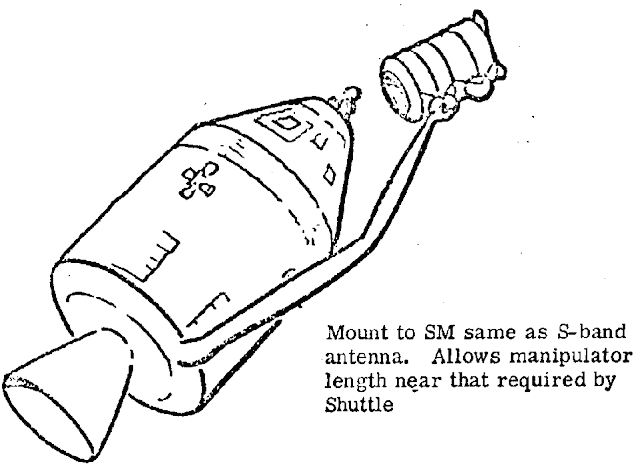
Caldwell Johnson's depiction of a prototype Shuttle manipulator arm with a hand-like end effector. The manipulator grasps the Docking Module meant to link U.S. Apollo and Soviet Soyuz spacecraft in Earth orbit during the Apollo-Soyuz Test Project (ASTP) mission.
Johnson estimated that new hardware for the ASTP Shuttle manipulator demonstration would add 168 pounds (76.2 kilograms) to the CM and 553 pounds (250.8 kilograms) to the SM. He expected that concept studies and pre-design would be completed in January 1973. Detail design would commence in October 1972 and be completed by 1 July 1973, at which time CSM-111 would undergo modification for the manipulator demonstration.
Johnson envisioned that MSC would build two manipulators in house. The first, for testing and training, would be completed in January 1974. The flight unit would be completed in May 1974, tested and checked out by August 1974, and launched into orbit attached to CSM-111 in July 1975. Johnson optimistically placed the cost of the manipulator arm demonstration at just $25 million.
CSM-111, the last Apollo spacecraft to fly, reached Earth orbit on schedule on 15 July 1975. By then, Caldwell Johnson had retired from NASA. CSM-111 carried no manipulator arm; the tests Johnson had proposed had been judged to be unnecessary.
That same month, the U.S. space agency, short on funds, invited Canada to develop and build the Shuttle manipulator arm. The Remote Manipulator System — also called the Canadarm — first reached orbit on board the Space Shuttle Columbia during STS-2, the second flight of the Shuttle program, on 12 November 1981."
source
#Apollo–Soyuz#Apollo Soyuz Test Project#ASTP#Apollo CSM Block II#CSM-111#Rocket#NASA#Apollo Program#Apollo Applications Program#Canadarm#Shuttle Manipulator Arms#Skylab Orbital Workshop#Skylab OWS#Skylab#Skylab I#Skylab 1#SL-1#Space Station#Apollo Telescope Mount#ATM#Cancelled#Cancelled Mission#my post
42 notes
·
View notes
Text
I do think every engineer working on a manned spacecraft should be made to study manned spacecraft fatalities and understand how and why they occurred because it is a critical reality check. A greater priority is placed on safety when you have seen the loss that can happen from a focus on speed or innovation over safety. Soyuz 1. Apollo 1. Soyuz 11. Challenger. Columbia. SpaceShipTwo. Look into the eyes of the people who have died in the pursuit of space exploration and think about the lives in your hands.
32 notes
·
View notes
Text
FAM fanworks from last year's FTH auction
Creator signups for this year's @fandomtrumpshate auction close this Sunday! But before they do, I wanted to do a roundup of all of the awesome FAM fanworks that were created as a result of last year's auction, in hopes this will inspire y'all to sign up as creators, or to bid on fanworks once the auction opens (or both!)
You can also find most of these fanworks (and a few others still in production, once they're done) by looking at the FAM tag in the FTH 2024 collection.
FICS
For All Womankind by darktensh17 (3k)
Molly Cobb never asked to be a hero to women. She never thought she'd get far enough to see her dreams come true either.
Commentaries on Official Business by @midnight-els (14k)
A look into life in the Office of the Director and Margo Madison's leadership style as Nuri's first week left alone with her takes a couple of unexpected turns.
he's haunted by the back thens, strangled by the timeline by @benwvatt (1.8k, 1/2 chapters)
In which Tracy and Gordo are severely injured after the season 2 finale and receive critical medical care. Nick Corrado proceeds to freak the fuck out about it.
middle of the road by @josephpaine (10.5k)
or; how Karen Baldwin, Molly Cobb, Ed Baldwin, and Wayne Cobb kind of get their grooves (both individual and group) back in the summer of '84.
The Later Muses by me (tiltedsyllogism) (8.5k)
After leaving the second time, Pam takes it day by day.
PODFICS (i.e. audiobook-type recordings of fics by other fans)
Re: Re: Re: Re: URGENT: Apollo-Soyuz by @porcupine-girl, audio recording by kitartpods
D-mails between Ellen and Margo throughout Season 2.
Rest and Be Thankful by @midnight-els, audio recording by kitartpods
Set sometime between s1 and s2, Molly tries to convince Margo to stop working and have a much needed sleep.
thinking different by me (tiltedsyllogism), audio recording by @avawtsn
In which Wayne and Karen help each other contend with different kinds of uncomfortable newness.
No Real Reason to Be Lonely by me (tiltedsyllogism), audio recording by @avawtsn
The day Ed's divorce becomes official was always going to be a shit day, but Molly has a plan for helping Ed get through the worst of it.
Worth It by @nicehatgeorgia, audio recording by @avawtsn
Sergei and Margo kiss in the docking module... and then they kind of freak out.
If you're interested in offering to create a fanwork for a fellow fan to help raise money for awesome nonprofits, or if you're interested in the opportunity to prompt another fan creator, keep an eye on @fandomtrumpshate !
16 notes
·
View notes
Text
This Soyuz-Apollo romance has me in shambles. SHAMBLES. It all starts with Sergei challenging Margo with the whole "No, that's not astronaut 3 and 4, that is cosmonaut 1 and 2." and "I suggest Soyuz-Apollo. For convenience." and "Soyuz will be the active part." He's such a cunt with it but he is also right. He needs to be doing this because otherwise, the Russian involvement in it will always just be an accessory. An afterthought. Also frankly I think it was funny for him to be a little shit. I hope it was funny to Sergei too.
Margo had absolutely no say in falling for him. But I also think that she puts an incredible amount of love into the people around her. Purposefully. She let Wernher close to her, and made herself vulnerable by asking how much he knew, and I think she was trying to find something that negates all the harm Wernher has done. Something that excuses his actions even a little bit. One can see how much she cares about basically everyone who is up in space at any point. She is so hopeful and scared when things go wrong. She made herself incredibly vulnerable with Aleida. She met up with her several times, knowing she needed it. Needed Margo as a parental figure in her life. She asked her to join NASA, knowing it was a risk, knowing that Aleida might slam the door into her face and hope it breaks her nose. Knowing Aleida might fuck it up big time and ruin Margo's reputation as she vouched for her. And Margo kept at it, until Aleida could stand on her own two feet. Despite how often she got hurt, she always keeps loving. Despite the constant paranoia and hatred towards Russia/Russians from the people around her, Margo and Sergei bantered over Apollo-Soyuz vs Soyuz-Apollo after Margo invited him to one of the places she never shows someone else. One of the sides she hides from everyone around her because that's HER space. it's her. Despite the revelations about Wernher, she trusts that Sergei won't be like him, even though it could very well be plausible for Sergei to have dark secrets as well.
She is so silly when she is with Sergei at first. She allows herself to just relax and be silly when she has to constantly be so fucking serious. The little paper ships docking. Them being stuck in the handshake tube thing. Margo never lets people get physically close to her like this. She isn't uncomfy. She is very comfy in there, despite being stuck and being super close to Sergei, despite Sergei clearly finding this amazing and hilarious, and MISSING THE COIN FLIP- Margo pushes him away because she has to. She doesn't want to push him away. She is MAD when he talks about work after they made out. Margo "I am always professional and this is not a place for feelings" Madison is livid this is interfering with literally anything - and livid that anyone would threaten Sergei like this.
She cares about him so much. She promises to keep him AND his family safe and it's clear she will do everything to achieve it. She doesn't shove him away going "this is fucking dangerous and I'm not risking everything I am and have for you". She goes "I'll get you and your family out of here." She KNOWS this might be the worst heartbreak she will ever go through. She KNOWS she might end up being tortured or killed or being seen as a traitor, a coward, a defector - And she does it anyway. She didn't stumble into any of this. She fucking ran praying to be fast enough.
That scene of her screaming into the pillow? fucking gold star. What I love so fucking much about this romance is that it's not a "it's too dnagerous to love me" shtick. it's "well FUCK. well FUCK. i love you and i can't do anything about it. so what do we do? how do we keep everyone safe, and be together? and be together.
It hurt her so much to constantly dismiss Aleida's efforts of finding out who gave away the engine design. And it scared her because she knows Aleida doesn't give up. And that is such a good thing.
Margo for sure wanted to run away with Sergei. But she couldn't promise him anything. And then, she didn't get to. She never got to say "I'll run with you." she never got to say "I love you." But everything she did conveyed just that. Everything she did was such a pure form of admiration, dedication, love, vulnerability, fear-
She was READY to rip Irina into pieces. She was. all she could say was "You knew him for years!" She couldn't SAY "I loved him and you know that." She couldn't SAY "he was always in a good mood, always happy, always loving, always caring, he was the best of the best, he was selfless and gorgeous and amazing" - she could only appeal to Sergei's supposed loyalty to the Russians. That was all the leverage she had. I WISH we knew what Irina thought in this moment. How much she knew. If she knew after Margo crying CRYING in a full room of silent people, in front of IRINA, maybe being aware that this might reveal her love for Sergei- And it hurt her so much that Aleida got pulled into this. Aleida was right, it had to be her typing the code. And it broke Margo that there was nothing she could do against it. Only for her to take the blame. Irina was in that room. Eli was there. Aleida was there.
Margo knew Sergei would be SO PROUD and SO PISSED if he had the chance of learning about this. Margo was stripped of the last tidbits of her honor, she was stripped of her diplomatic immunity - for all she knows, she could be kidnapped by the KGB and tortured for however long her body holds up. Especially if Irina pieced it together somewhere along the way. And she still went for it. And she let Aleida hug her in front of everyone because she knew that this was more important than the shit Aleida could catch for it. AND AFTER THIS. AFTER HER FEELINGS HAVE BROUGHT HER SO MUCH FUCKING PAIN AND MISERY, AFTER SERGEI ESSENTIALLY GOT KILLED FOR HAVING FEELINGS AND BEING IN LOVE, she says that feelings are a good thing. "Your honor, I was always told we shouldn't let personal feelings cloud our search for the truth. I don't think that's right. Feelings might not always be convenient," WELL . YOUR FEELINGS CERTAINLY WERE NEVER CONVENIENT- GOD- FUCK- THIS WOMAN. "they may even slow our progress, but they are also the only way to truly begin to understand the world around us. And the new worlds that await us." She EMBRACES it all. She might be in American prison from the sounds of it but this absolute powerhouse is looking forward to new worlds. She embraces that she felt all these feeings. She once thought she was like WERNHER VON BRAUN because of things she did. LIKE WERNHER VON FUCKING BRAUN- and now she is like "I did that." Also frankly I think she feels a little proud of herself when she gets escorted out of the mission control room. She does look a little smug, right? So anyway I will be reading all Margo Sergei fics I can find and post a thousand posts about them and I think Apollo-Soyuz should be a synonym for top Margo bottom Sergei and the other way around and I will now continue to scream into the void. thank you for your understanding. thank you for coming by on such notice.
27 notes
·
View notes